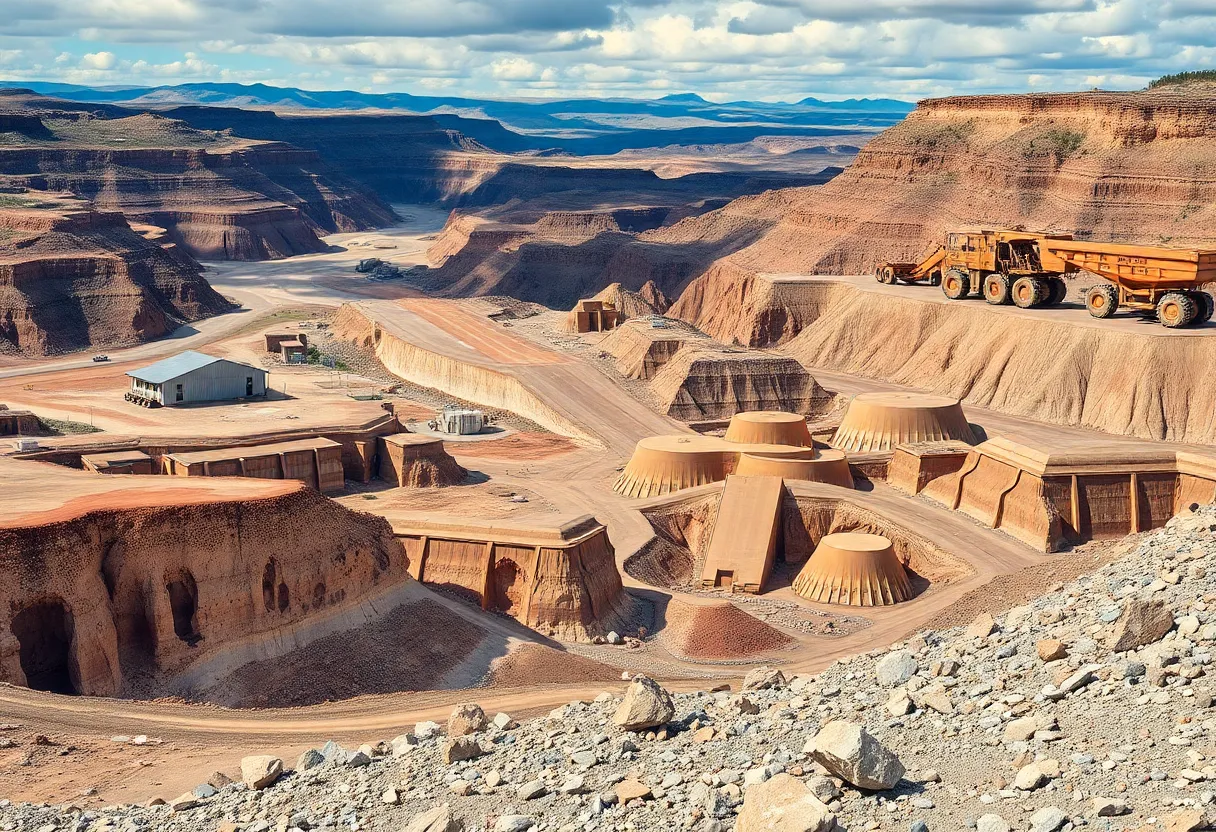News Summary
The Trump administration is looking to revamp critical minerals and energy production on public lands, aiming to reduce reliance on foreign imports, particularly from China. Proposed initiatives include investment in domestic mining companies, creation of a sovereign wealth fund, and rapid approval processes for mining projects. While these changes aim to boost local production, concerns are raised about the potential environmental impacts and the erosion of existing land protections. Critics argue the demand for development is low, and the legal implications of altering national monument boundaries are being scrutinized.
Trump Administration Eyes Major Overhaul for Critical Minerals and Energy Production on Public Lands
Exciting changes might be on the horizon for the mining and energy sectors in the United States, as the Trump administration looks to revamp how critical minerals are developed on public lands. The focus? Reducing reliance on imports from other countries—especially from China, a major player in the critical minerals market.
The Push for Domestic Production
To kickstart this initiative, the administration is contemplating investing in domestic companies that specialize in mining and processing critical minerals. Officials believe that by making these equity investments, the U.S. can level the playing field with China’s state-backed capital, which currently dominates the market.
Interior Secretary Doug Burgum has pointed out that China is often accused of dipping prices by dumping minerals onto international markets. This practice poses a significant challenge for U.S. miners who struggle to compete with these lower prices. To tackle this issue, Burgum advocates for the establishment of a sovereign wealth fund dedicated to investing in U.S. companies focused on the extraction and processing of critical minerals.
Why Haven’t We Done This Before?
The Secretary also raised an eyebrow over why the U.S., being one of the wealthiest countries globally, lacks a robust sovereign wealth fund. This move is essential, especially considering that, as of 2024, approximately 80% of rare earth elements used in various industries—ranging from defense to energy—are imported, with about 70% sourced from China in 2023. With such heavy dependence on foreign supply, Burgum believes it’s time for the U.S. to jump back into the mining game.
New Safety Nets for Investment
To cushion the risks associated with domestic mining, the administration is proposing a sovereign risk insurance fund. This fund aims to protect companies investing in approved mining projects from political fluctuations that could jeopardize their operations. The plan also includes the idea of stockpiling critical minerals during price slumps, mimicking the strategic petroleum reserve model.
Simplifying the Approval Process
The Interior Department is gearing up for rapid approval processes for both fossil fuel and mining projects on public lands. This initiative aims to eliminate delays and accelerate progress. Where environmental reviews typically take one to two years, this new plan seeks to shorten that timeline significantly—to as little as 14 or 28 days!
However, it’s important to note that environmental advocates have concerns about this expedited process. They argue that hastening reviews can lead to overlooked risks and potential hazards, which might put public safety on the back burner in favor of corporate profits.
National Monuments Under Review
In what could stir more debate, the administration is considering scaling back the boundaries of national monuments to encourage energy development. At least six monuments, including Baaj Nwaavjo I’tah Kukveni—Ancestral Footprints of the Grand Canyon, Ironwood Forest, and Grand Staircase-Escalante, are on the chopping block for reevaluation.
This push for energy development aligns with a broader strategy of restoring an “energy balance” while increasing mineral extraction on federal lands. However, this proposal is anticipated to face legal challenges, especially concerning presidential powers under the Antiquities Act.
The Bigger Picture
Critics of these initiatives highlight that the demand for development in these designated areas is relatively low, and such changes could threaten vital ecological and cultural values. The draft strategic plan being pushed by the Interior Department outlines priorities that even extend to boosting fossil fuel output and revising grazing costs until 2030.
Ultimately, the administration is investigating the legality of removing existing land protections, an issue that has long been contentious in western states. As mining and drilling interests clash with conservation efforts, the future of public lands as we know it may be on the brink of transformation.
As these initiatives unfold, many will be watching closely to see how they balance economic growth with environmental protection.
Deeper Dive: News & Info About This Topic
- CNBC: Trump Weighs Investments in Critical Mineral Companies
- Wikipedia: Critical Minerals
- New York Times: Trump Seabed Mining
- Google Search: Trump Seabed Mining
- The Hill: Trump Administration Fossil Fuels Mining on Public Lands
- Encyclopedia Britannica: Mining
- Washington Post: Trump National Monument Reductions
- Google News: Trump National Monument Reductions

Author: STAFF HERE PETERSBURG WRITER
The ST PETERSBURG STAFF WRITER represents the experienced team at HEREStPetersburg.com, your go-to source for actionable local news and information in St Petersburg, Pinellas County, and beyond. Specializing in "news you can use," we cover essential topics like product reviews for personal and business needs, local business directories, politics, real estate trends, neighborhood insights, and state news affecting the area—with deep expertise drawn from years of dedicated reporting and strong community input, including local press releases and business updates. We deliver top reporting on high-value events such as Grand Prix of St. Petersburg, Localtopia, and SHINE Mural Festival. Our coverage extends to key organizations like the St. Petersburg Area Chamber of Commerce and St. Pete Downtown Partnership, plus leading businesses in finance, manufacturing, and healthcare that power the local economy such as Raymond James Financial, Jabil, and Bayfront Health St. Petersburg. As part of the broader HERE network, including HEREJacksonville.com, HEREOrlando.com, HERETallahassee.com, and HERETampa.com, we provide comprehensive, credible insights into Florida's dynamic landscape.





